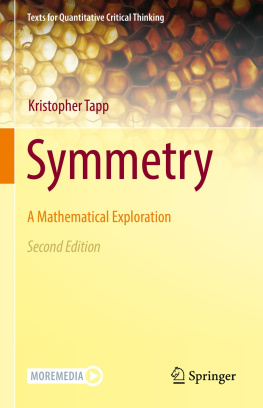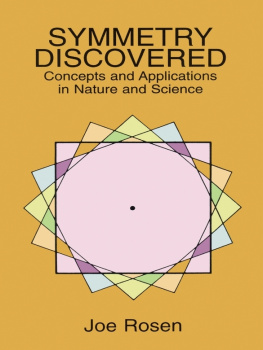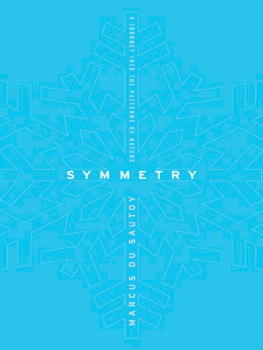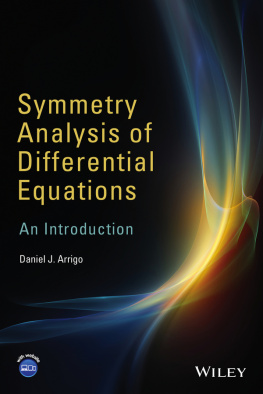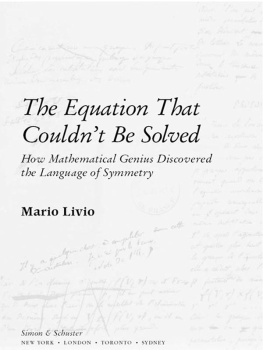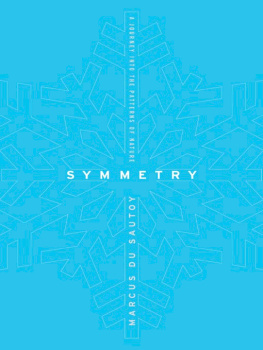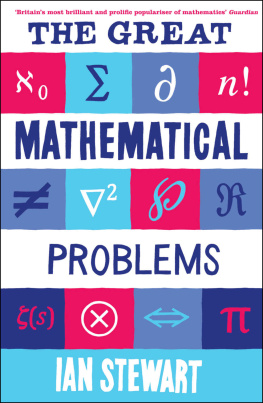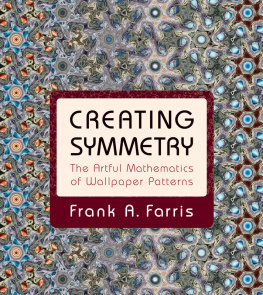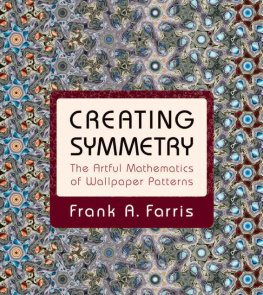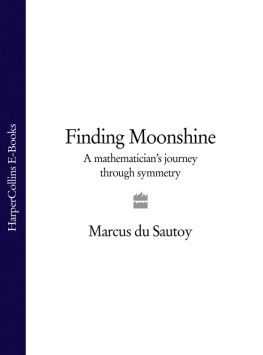Symmetry and the Monster
One of the greatest quests of mathematics
Symmetry and the Monster
One of the greatest quests of mathematics
Mark Ronan


Great Clarendon Street, Oxford OX 2 6 DP
Oxford University Press is a department of the University of Oxford. It furthers the Universitys objective of excellence in research, scholarship, and education by publishing worldwide in
Oxford New York
Auckland Cape Town Dar es Salaam Hong Kong Karachi Kuala Lumpur Madrid Melbourne Mexico City Nairobi New Delhi Shanghai Taipei Toronto
With offices in
Argentina Austria Brazil Chile Czech Republic France Greece Guatemala Hungary Italy Japan South Korea Poland Portugal Singapore Switzerland Thailand Turkey Ukraine Vietnam
Published in the United States by Oxford University Press Inc., New York
Mark Ronan 2006
The moral rights of the author have been asserted Database right Oxford University Press (maker)
First published 2006
All rights reserved. No part of this publication may be reproduced, stored in a retrieval system, or transmitted, in any form or by any means, without the prior permission in writing of Oxford University Press, or as expressly permitted by law, or under terms agreed with the appropriate reprographics rights organization. Enquiries concerning reproduction outside the scope of the above should be sent to the Rights Department, Oxford University Press, at the address above
You must not circulate this book in any other binding or cover and you must impose this same condition on any acquirer
British Library Cataloguing in Publication Data Data available
Library of Congress Cataloging in Publication Data Data available
Typeset in Times by RefineCatch Limited, Bungay, Suffolk Printed in Great Britain on acid-free paper by Clays Limited, St Ives plc
ISBN 0-19-280722-6 978-0-19-280722-9
1 3 5 7 9 10 8 6 4 2
Preface
In recent years several books on mathematics have been published, presenting intriguing pieces of the subject. This book also presents some interesting gems, but in the service of explaining one of the big quests of mathematics: the discovery and classification of all the basic building blocks for symmetry. Some mathematicians were sceptical of explaining it in a non-technical way, but others were very encouraging, and I would like to thank them. In particular I owe thanks to those mathematicians who read all, or large parts, of the manuscript: Jon Alperin, John Conway, Bernd Fischer, Bill Kantor, and Richard Weiss. I also thank my son and daughter who were always positive about the outcome, and finally my editor Latha Menon who made very helpful criticisms.
Mark Ronan,
February 2006
Contents
To Grace Varndell,
my headmistress from primary school,
who still remembers exactly where I sat in class.
Prologue
What we know is not much. What we do not know is immense.
Pierre-Simon Laplace (17491827), said to be his last words
In November 1978 an English mathematician named John McKay was reading a research paper at his home in Montreal. He worked in a branch of mathematics called group theory, which deals with the study of symmetry. It was an area that had recently produced some exceptional objects in many dimensions, but McKay was taking a break by reading a paper in number theory, the part of mathematics that deals with the whole numbers. There was no connection or so he thought.
The largest of the exceptional symmetry objects had been called the Monster. It had not yet been constructed, but a careful examination of the data showed that the Monster if it existed could probably be viewed in 196,883 dimensions. Now McKay was reading about an object in number theory, and out popped the number 196,884. He was astonished. Any relationship with the Monster seemed absurd they came from completely different parts of mathematics but he felt he should tell someone, so he wrote a letter to John Thompson, the great guru in group theory.
Another person receiving the letter might have waved aside the coincidence as too speculative and beyond understanding, but not Thompson. He was a sober cerebral man, and he took it seriously. He checked up on other numbers far bigger than 196,883 that came out of the Monster and compared them to those that emerge in number theory from the miraculous object that McKay had been reading about. Thompson found further coincidences and saw that a more detailed study was called for.
When he returned to Cambridge in December hed been visiting the Institute for Advanced Study in Princeton when he received McKays letter he mentioned these coincidences to John Conway, who had found some of the new symmetry objects himself. Conway had masses of data on the Monster, and used it to produce other sequences of numbers that might be interesting. He then visited the library and found the same sequences appearing in some nineteenth-century papers on number theory. He and a young mathematician named Simon Norton used these facts to make further calculations and verify that there was a definite connection between the Monster and number theory, even though we didnt understand why.
Conway dubbed the whole thing Moonshine, not because he thought it was nonsense, but because The stuff we were getting was not supported by logical argument. It had the feeling of mysterious moonbeams lighting up dancing Irish leprechauns. Moonshine can also refer to illicitly distilled spirits, and it seemed almost illicit to be working on this stuff. The term soon caught on, and when I first heard it I took it to suggest something shining by reflected light, like the Moon. There may be a more primary source of illumination yet to be discovered, and this is one of the great attractions of mathematics the deeper we go into the subject, the more there is to discover.
Mathematics will never be fully known. There will always be deeper levels to uncover and further surprises in store. Carl Friedrich Gauss, one of the greatest mathematicians of all time, has called mathematics The queen of sciences, and it is a subject that compels creativity, driving mathematicians forward on quests that are beyond the power of any individual.
The quest in this book leading eventually to the Monster and Moonshine is to discover all the basic building blocks for symmetry. In following this quest we shall examine symmetry and how mathematicians have used it to solve deep problems. In the meantime, it is worth quoting that polymath Goethe, who wrote of symmetry:
By the word symmetry ... one thinks of an external relationship between pleasing parts of a whole; mostly the word is used to refer to parts arranged regularly against one another around a centre. We have ... observed [these parts] one after the other, not always like following like, but rather a raising up from below, a strength out of weakness, a beauty out of ordinariness.
How we go from the mathematical study of symmetry to the Monster is a long story, but I can summarize it in a few words. Most of the basic building blocks for symmetry come in one of several infinite sub-families. These sub-families combine together in larger families, but then there are the exceptions: 26 of them that dont fit in any of these families, the largest being the Monster.
Finding these infinite sub-families and then finding the exceptions is a story that takes us from France in 1830 to the 30 years following the Second World War. Showing that they form a complete list takes us right up to the present day. And finding the underlying connections between the Monster and other branches of mathematics and physics takes us into the future.
Next page

